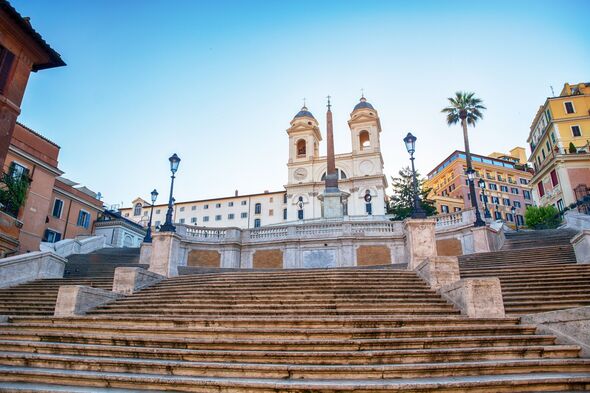As G7 Culture Ministers gathered in Naples and Pompeii over the weekend, September 21-22, a row over whether France or Italy owns Rome’s iconic Spanish Steps erupted reopening old wounds.
“I am really very astonished that one can interpret and distort the meaning of a report by the French Court of Auditors that addresses the French and in particular the ‘Pieux Établissements’ for the management of religious property in Italy,” Pierre Moscovici, the President of the Court of Auditors, told the Italian news agency ANSA.
His comments were aimed at calming tensions that had arisen over the ownership and maintenance of the steps – a subject that exploded earlier this month following the publication of a report by the French Court of Auditors on the real estate managed by France in Rome.
In the report, French magistrates wrote that a “confirmation of the legal status” of the Spanish Steps is needed to “clarify responsibilities in terms of maintenance and restoration”.
The site was designed by Italian architects Francesco De Sanctis and Alessandro Specchi between 1723 and 1726. However, it was built with “French funds and managed until the end of the 19th century by the Pieux Établissements,” the report states. Thereafter, its care was always Italian and was negligent, the French judges argued.
Among the first to comment on the report last week was Italy’s Tourism Minister Daniela Santanchè: “What would France be without Italy. They cannot do without our luxury, our works, our beauty,” she posted on social media. “But now they exaggerate. They even want to take the Spanish Steps of Trinità dei Monti.”
The site is one of Rome’s most iconic for millions of tourists, with around 82 percent of tourists visiting the site, according to Road Genius.
“It’s a laugh,” added Chamber of Deputies Vice-President Fabio Rampelli. “Then we will send experts to the Louvre to make an up-to-date reconnaissance of the assets taken from Italy throughout history.”
The French heritage in Rome consists of five churches including Trinità dei Monti and San Luigi dei Francesi, as well as 13 French properties in its historic centre including Villa Medici. According to the French newspaper Le Monde, this estate is worth around 250 million euros (£209 million) and generates an annual income of 4.5 million euros (£3.7 million).
The entrusting of these five churches in Rome to the French institution that manages them is part of bilateral international agreements between France and the Holy See. These agreements date back to a decision by Pope Pius VI, who in 1790 instructed the French Ambassador to the Holy See, to place all religious buildings in Rome under his protection.
During the 20-year fascist era under Mussolini, there was considerable but unsuccessful, pressure from the government to return the assets of the Pieux Établissements, including Villa Medici, to Italy.
The church Trinità dei Monti is central to the two EU countries’ disputes. This is because when the French patron and diplomat Étienne Gueffier died in 1660 – a man who had invested a large sum of money in the construction of the staircase leading from the Pincio to the Spanish Steps – left two separate wills, one for assets in France and one for Italy. In the Italian one, he made a binding allocation of 20,000 Roman scudi for the construction of the 136 steps that have become so famous.
Additionally, several notable Italian artworks were taken from Italy and are now exhibited in the Louvre in Paris. This includes Leonardo’s Mona Lisa, as well as Andrea Mantegna’s Madonna della Vittoria and Paolo Callari’s Wedding at Cana, which the Veneto region has asked to be returned.
“A month ago, I sent a letter to French President Macron to have the work returned to its original location, and now I will write to the new Minister of Culture, Alessandro Giuli,” Luciano Sandonà, the president of the Regional Commission for Institutional Policies, said in relation to Callari’s canvas.
Silvano Vinceti, who specialises in reconstructing the works and lives of great artists of the past including Leonardo Da Vinci, then added: “If one accepts the (French) claims, then the government should make a pressing request to have part of the works savagely taken to Italy by Napoleon as spoils of war,” Vinceti said.
“I want to reassure our Italian friends: the report only asks for a clarification on the situation of the assets, and when it is clarified it is always positive,” reassured Moscovici on the Spanish Steps. “Nothing to do with claims, there is no intention to privatise or to empty the meaning that those properties have,” he added. “The aim is to bring centuries-old law into line with facts.”
“The Scalinata is a monumental place of the highest artistic value, but it is also a public thoroughfare and is therefore without discussion an integral part of Rome as the capital of Italy,” Claudio Parisi Presicce, Superintendent of Cultural Heritage of Rome, said in a note.
